-
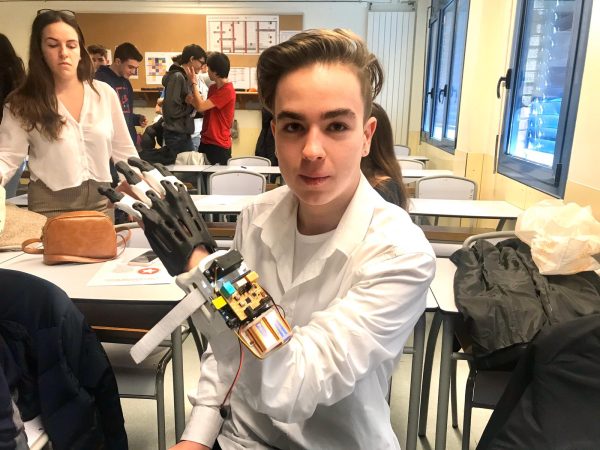 StudentsRelated Post: High School Senior Makes an Award-Winning Prosthetic Finger Using Muscle SpikerShield Tens of thousands of dollars: that’s how much people have to pay for a robotic prosthesis — not even the most sophisticated type. It’s what prodded Jorge Iglesias Costas, at the time a 17-year-old high-schooler in Barcelona, to try and design a low-cost […]
StudentsRelated Post: High School Senior Makes an Award-Winning Prosthetic Finger Using Muscle SpikerShield Tens of thousands of dollars: that’s how much people have to pay for a robotic prosthesis — not even the most sophisticated type. It’s what prodded Jorge Iglesias Costas, at the time a 17-year-old high-schooler in Barcelona, to try and design a low-cost […] -
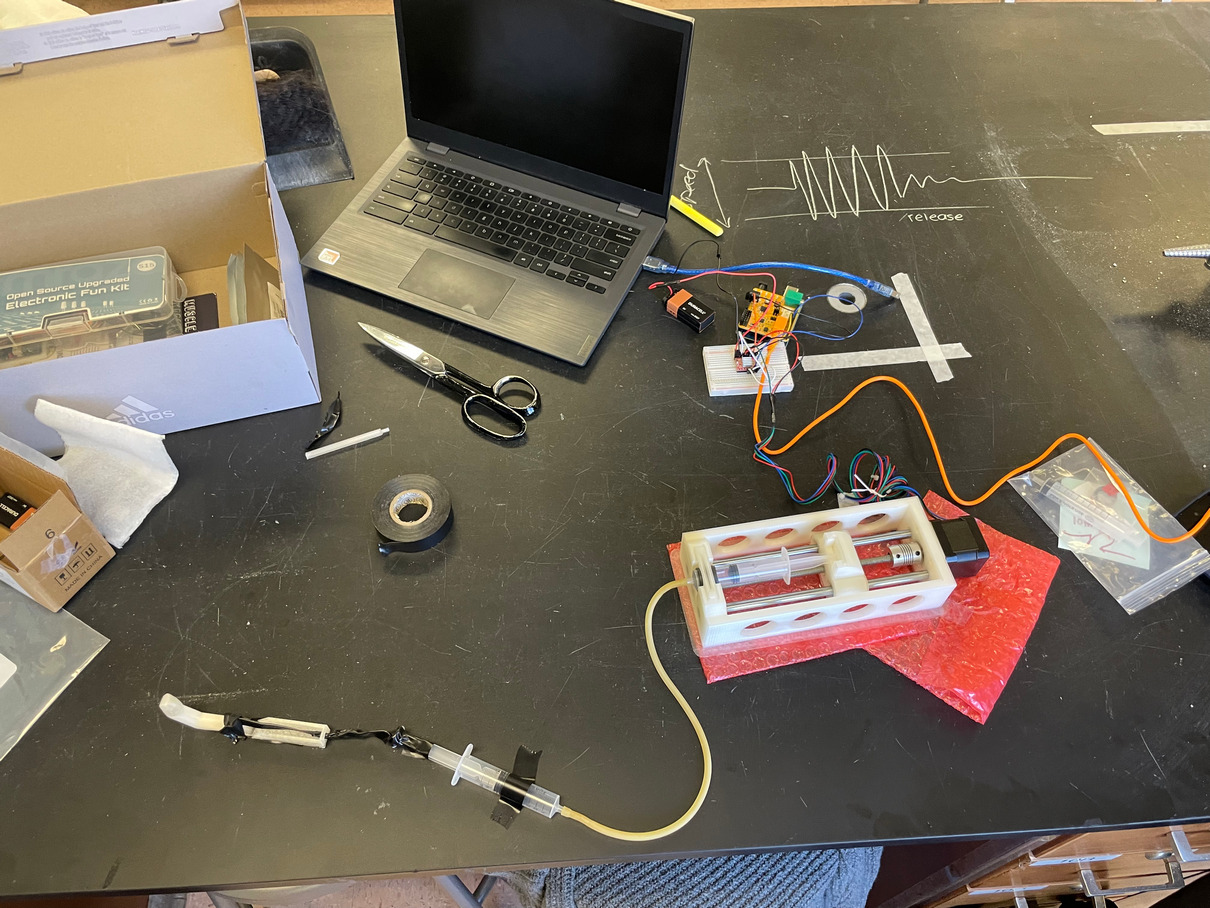 StudentsA pump made of two plastic syringes and a pushing block powered by a stepper motor, one of our Muscle SpikerShields and a 3D-printed base — that’s all that Kiley Branan, a high school senior from Indiana, needed to put together a prototype of a finger that you can open and close by flexing your […]
StudentsA pump made of two plastic syringes and a pushing block powered by a stepper motor, one of our Muscle SpikerShields and a 3D-printed base — that’s all that Kiley Branan, a high school senior from Indiana, needed to put together a prototype of a finger that you can open and close by flexing your […] -
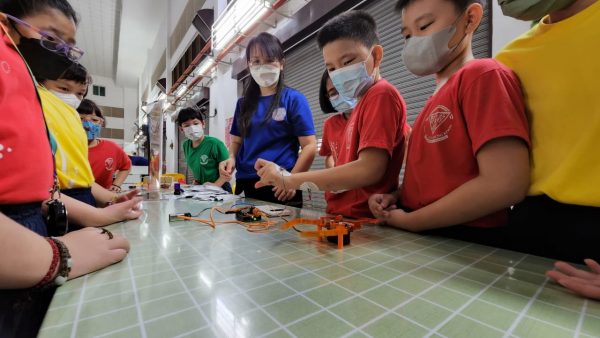 EducationWe’re ending the eventful year of 2022 grand style – by sending our gear on yet another trip across the world to further our #NeuroRevolution! This time, it was George Town in Penang, Malaysia, where school kiddos got to try their hands at our Claw. The neuroscience booth was part of an exhibition funded by American […]
EducationWe’re ending the eventful year of 2022 grand style – by sending our gear on yet another trip across the world to further our #NeuroRevolution! This time, it was George Town in Penang, Malaysia, where school kiddos got to try their hands at our Claw. The neuroscience booth was part of an exhibition funded by American […] -
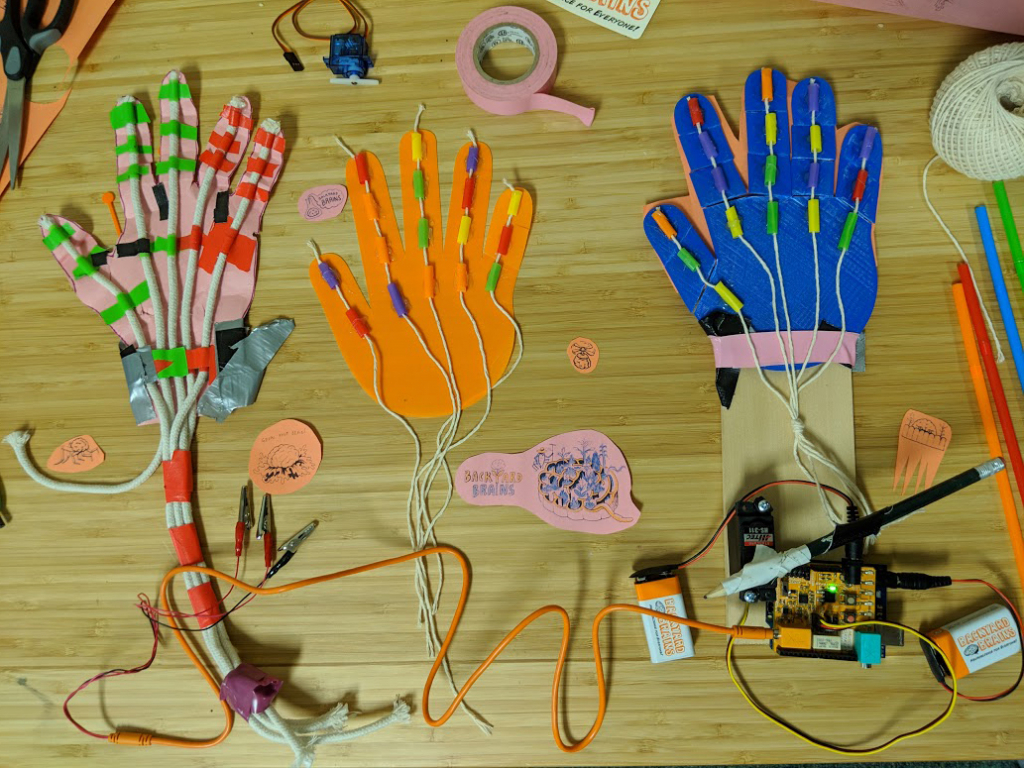 EducationFailure is an important part of theReiterative Design Process! For some students, dealing with failure can be tough. It’s frustrating to encounter obstacles in science! And for teachers – how do you grade a project when a student puts a lot of effort in, but keeps hitting roadblocks? Many of you already teach like this, but […]
EducationFailure is an important part of theReiterative Design Process! For some students, dealing with failure can be tough. It’s frustrating to encounter obstacles in science! And for teachers – how do you grade a project when a student puts a lot of effort in, but keeps hitting roadblocks? Many of you already teach like this, but […] -
 EducationA simple Neuroprosthetic may be made with anything and everything! Recently, I’ve been working with an 8th grade STEM teacher – Ms. Amy Farkas, from Riverview, MI – as she guides her students through a unit on prosthetics, neuroprosthetics, and other assistive technology. She began her unit having her students learn about hand articulation, tendons, and the […]
EducationA simple Neuroprosthetic may be made with anything and everything! Recently, I’ve been working with an 8th grade STEM teacher – Ms. Amy Farkas, from Riverview, MI – as she guides her students through a unit on prosthetics, neuroprosthetics, and other assistive technology. She began her unit having her students learn about hand articulation, tendons, and the […] -
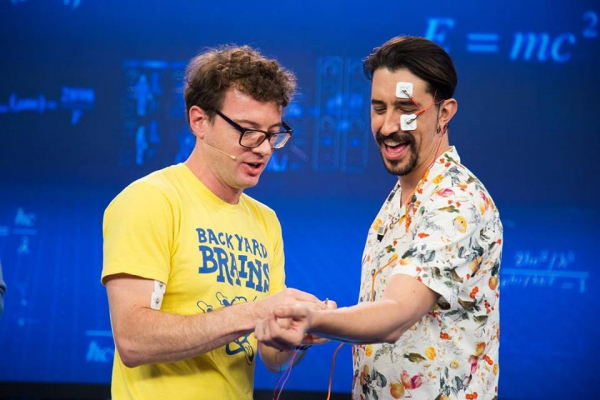 EducationTim marched his way down to El Hormiguero 3.0 (Spanish for “The Anthill”) to to continue talking about electrical impulses in the body. A special guest got to play with our new Claw model, and we dropped teasers for a few new products and experiments that have everybody firin’ and flexin’! ???
EducationTim marched his way down to El Hormiguero 3.0 (Spanish for “The Anthill”) to to continue talking about electrical impulses in the body. A special guest got to play with our new Claw model, and we dropped teasers for a few new products and experiments that have everybody firin’ and flexin’! ??? -
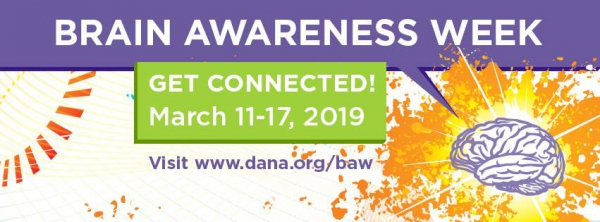 EducationEvery year in late March, scientists across the world band together to participate in Brain Awareness week, an extended event created by The Society for Neuroscience and Dana Alliance for Brain Initiatives to expose kids to neuroscience research. It is a week-long celebration of the brain, really, with participants ranging from universities to government agencies […]
EducationEvery year in late March, scientists across the world band together to participate in Brain Awareness week, an extended event created by The Society for Neuroscience and Dana Alliance for Brain Initiatives to expose kids to neuroscience research. It is a week-long celebration of the brain, really, with participants ranging from universities to government agencies […] -
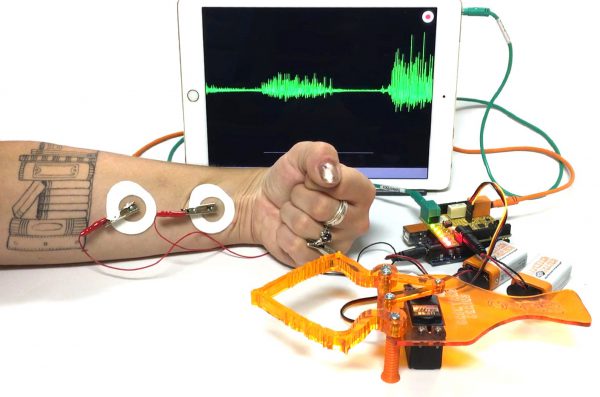 HardwareThe Backyard Brains Claw Bundle is the latest in our line of Muscle SpikerShield products! This kit comes with everything you need to begin experimenting with your first brain-machine interface. By using the electrical activity hidden within your muscles, you will learn how to control your first neuroprosthetic, the Claw! We’ve also provided a number of […]
HardwareThe Backyard Brains Claw Bundle is the latest in our line of Muscle SpikerShield products! This kit comes with everything you need to begin experimenting with your first brain-machine interface. By using the electrical activity hidden within your muscles, you will learn how to control your first neuroprosthetic, the Claw! We’ve also provided a number of […]